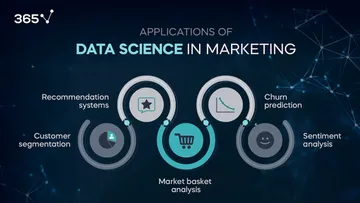
We’re spoiled for choice on all accounts during these modern times. Surely, you’ve walked the supermarket’s many aisles, picking your brain on what to get from the thousand options of potato chips, laundry detergents, and even tech products. It’s just too tough with all those great options, isn’t it? Well, there’s a complicated science behind it. Companies study consumer behavior, coming up with ingenious ways to ensure that what they’re putting out is worth the money.
In fact, the very definition of the marketing mix is precisely to develop the best product or service and offer it at the right price, through the right channels. In this article, we’ll go into more depth about this concept and break down its 4 variables – also known as the 4 Ps of marketing.
What Is Marketing Mix?
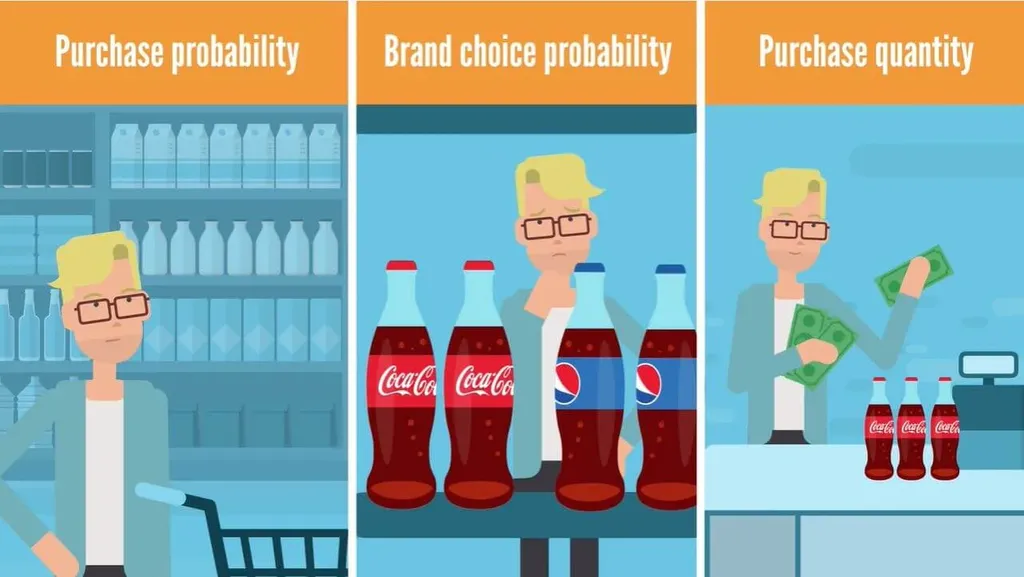
The marketing mix concerns itself with a product’s potential and how to best display its unique qualities that make it stand out from the rest, thus maximizing profit. Additionally, it also deals with the purchase process, how consumers go about picking which product to go for, and how many units they are going to buy.
The 4 Ps of Marketing Explained
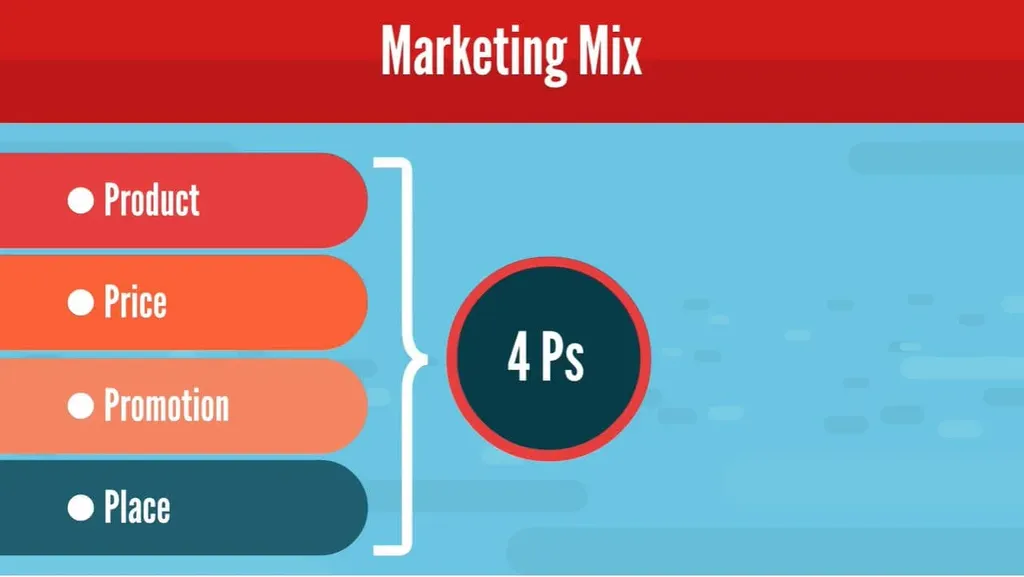
When talking about the marketing mix, we consider 4 groups of variables that are:
- Related to the characteristics of the product
- Related to the price of the product
- Related to promotions
- Related to the place or channel of the product
Commonly, these 4 groups are referred to as the 4 Ps of marketing: product, price, promotion, and place.
Marketing Mix: Product
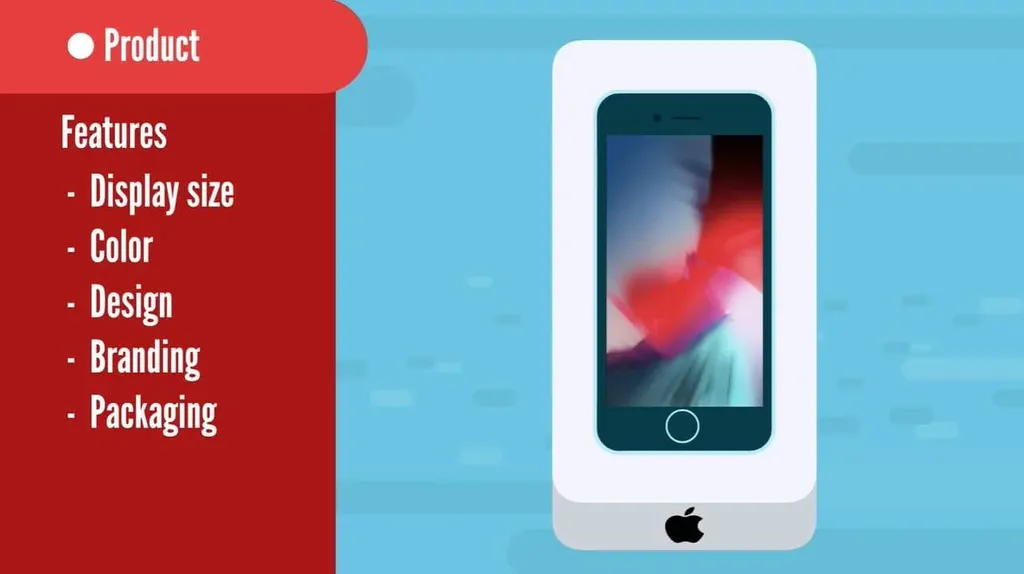
Product refers to the core attributes of the offering such as:
- Features
- Design
- Branding
- Packaging
Product Features
The most important part is the product features. For example, smartphones have features like display size, color, battery life, and so on. Let’s take an iPhone – it has different display sizes and comes in several colors.
Product Design
We know that the iPhone has always been extremely sleek, pleasing to look at and touch. It may not be the most productive smartphone on the market, but it definitely has one of the best designs – this is an integral part of Apple’s design strategy. Product design is important since appearance is highly valued by customers – they want their products to not only work well, but also look and feel nice.
Branding
Another important tool is branding – names, logos, slogans, symbols, and designs. These features help a product distinguish itself from others in the same category. To continue our iPhone example, we know that it is nothing more than a smartphone. However, it is branded as an iPhone, not as an Apple Smartphone – this is what makes it one of the most distinguishable products out there as it has a name of its own which is also easy to remember.
Packaging
Last but not least, packaging decisions are also part of the product variable. If you own one or have watched an unboxing video on YouTube, you’ll know that an iPhone comes in an immaculate box that opens easily, without damaging the packaging, to reveal an immediate sight of the product only. To enhance that effect, all cables and instruction manuals are hidden in a compartment below, highlighting the design. Nowadays, most smartphones are similarly presented to customers, but it is really Apple that pioneered the outstanding packaging trend.
Marketing Mix: Price
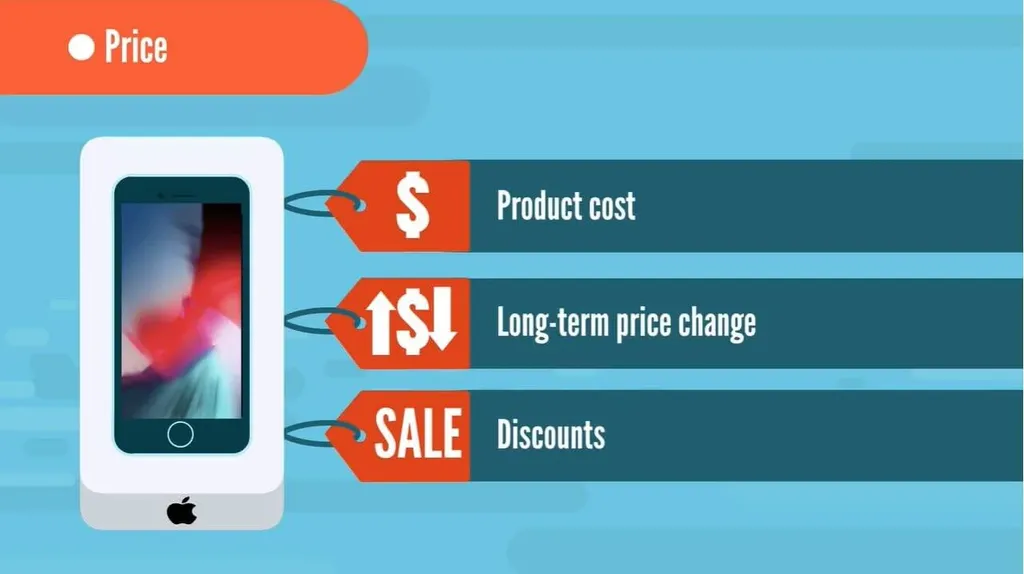
The second P stands for Price. As the name suggests, this category has to do with everything related to the product’s price. That is, first and foremost, how much it costs. Decisions about long-term price changes also belong here. Additionally, discounts are also an important pricing tool. And, of course, there can be credit terms or other payment terms that are also a pricing tool.
Marketing Mix: Promotion
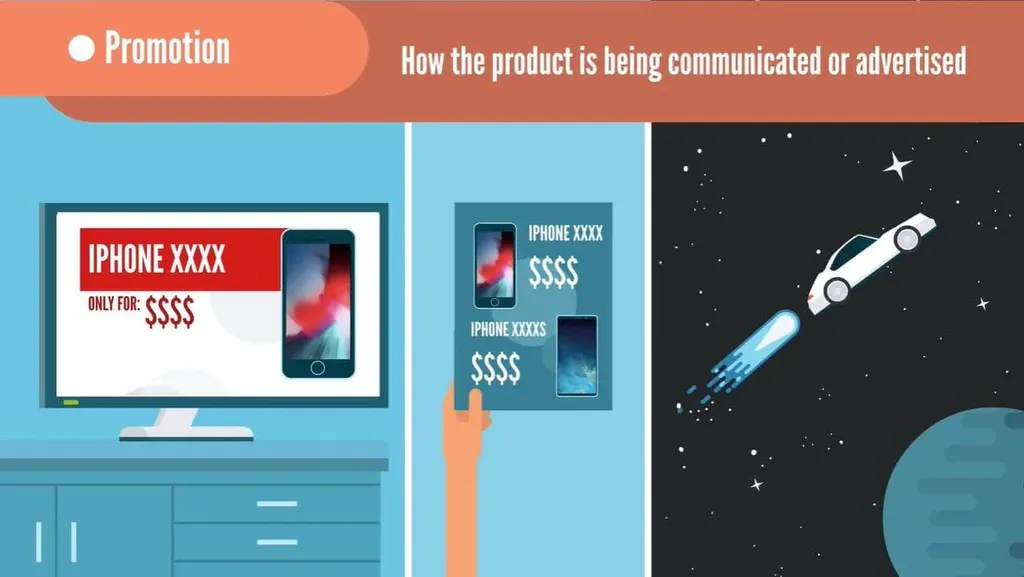
When you think of a promotion, you probably imagine some sort of discount. And you would be right – to a certain extent.
In fact, promotion is a broader term that refers to how the product is communicated or promoted, as well as the activities related to its actual sale and communication. There are many different examples of a promotion, such as:
- A TV advertisement
- Handing out flyers on the street
- Sending a Tesla into outer space
To illustrate further, let’s look at the TV ad’s 2 components. They consist of the exact words that are going to be used to communicate the product and the actual process of contacting the TV channel, setting up and paying for the ad, then making sales related to it. The important decisions here are what the messages should be and how often they should be communicated to the audience.
Sales Promotions
Now, most of the promotions are actually sales promotions, known as merchandising. There are three types of merchandising:
- Price reduction
- Display
- Feature
Price reduction is the simplest to grasp because we notice it every day. For example, a given $5 product is now sold for $2.
Price reductions could also be more complex – with the condition of buying more units. For example, buying 2 chocolate bars and getting a third one for free, essentially providing a 33% discount.
Display promotions happen when the product is situated in another selling location, different than its usual one. For example, a particular brand of potato chips can be displayed at the front of the store or at the cashier instead of the snacks aisle. Or maybe you have seen a car displayed in a shopping mall? Both are instances of a promotion with no price reduction – they’re display promotions because of their targeted positioning.
Feature promotions happen when customers are presented with specific opportunities for product purchase. For example, printed ads and newspaper inserts. In modern days, though, those are more subtle. Let’s take product placement in movies – the actors on screen all drive cool cars from one brand exclusively. You probably haven’t failed to notice that James Bond always drives an Aston Martin.
Marketing Mix: Place
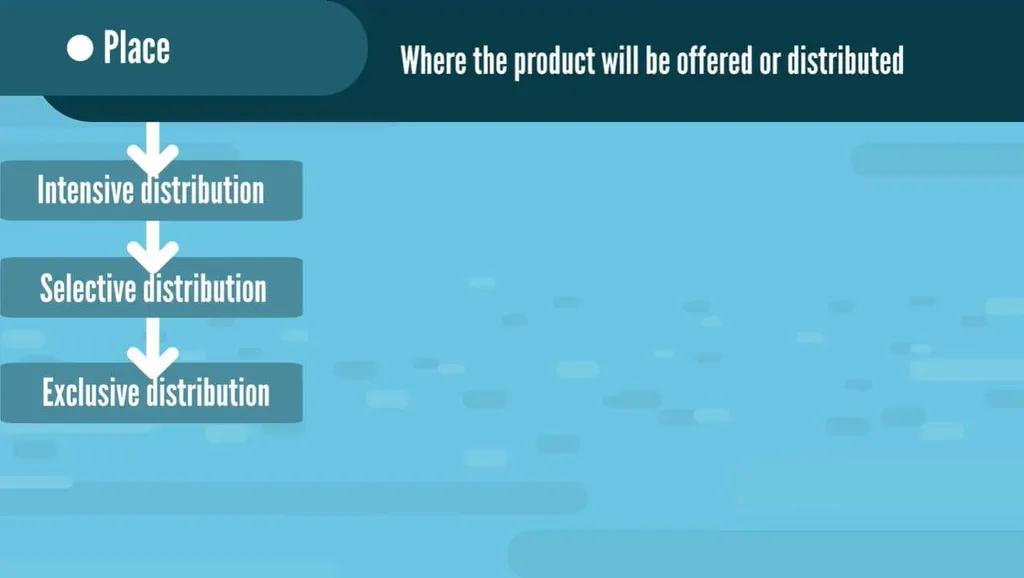
In essence, the place category is the product’s exact locations where distributers will be offering it. Distribution strategies can be grouped into three broad approaches:
- Intensive distribution
- Selective distribution
- Exclusive distribution
Let’s say a brand makes its product available at many different stores – that is called intensive distribution. Coca-Cola is a great example – its products are everywhere, in every supermarket, gas station, or hole-in-the-wall convenience store (unless restrictions apply).
But what if the product is only available at a few select stores? Usually, this can happen if a company’s marketing team feels that’s where they’ve got the best chance of selling it. In that case, we have selective distribution. A good example is, once again, the iPhone. You can find it in the Apple store, tech stores, or other similar locations, but never in large chain supermarkets that carry tech equipment.
And, finally, if only one select brand is sold in the store, then we have exclusive distribution. This is used for luxury items and products of a higher status. Do you know where you can buy a new Tesla Model 3 from? Well, only from Tesla. Similarly, you can only purchase a new Rolex from a Rolex store.
Marketing Mix: Next Steps
Now you know what the marketing mix tools are all about. It’s easy to remember them – after all, they’re the 4 Ps of marketing, essential to a product’s success and longevity.
They might seem more complicated than it first meets the eye, however, it’s vital to get acquainted with these tools if you’re interested in marketing and customer analytics. Your future career will certainly benefit from mastering customer analytics!



